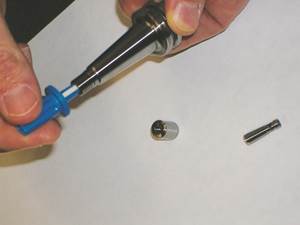3 Steps to Safety on the Shop Floor
A few simple strategies can be implemented immediately to get a shop moving in the right direction for a safer company culture.
Shop floor managers are always looking for ways to improve safety in the workplace, but they often don’t know where to begin in correcting those pesky safety mistakes. The good news is that a few simple strategies could be implemented today to produce the desired effect of enhanced safety practices.
Learning from past mistakes, establishing a response pattern, and promotion of education are three fundamental tasks that can be taken to change the safety culture in a company. Here are three steps to help a shop move forward.
Learn from past mistakes. The old adage holds truth here: We must learn from the past. Often mistakes are a perfect opportunity to define an ways to do things better next time around. This principle is especially true when it concerns safety mistakes. Learning from past mistakes or, even more so, analyzing them allows employees to assess, evaluate, and optimize their practices to prevent future occurrences.
Championing this ideology is a big part of safety, recognizing that doing things wrong sets a course of action that allows future incidents to be handled more prudently. Management personnel should encourage this progressive attitude.
Establish a response pattern. Implementing a response framework is another way to correct safety mistakes in the workplace. By doing so, workers will be able to identify the correct choices to make in the event of an incident—personnel will know what to do and what not to do. Thus, previous mistakes on the shop floor that were considered a part of the program are now rendered obsolete.
According to Safety Services Company, knowledge of how to properly use the appropriate devices in an emergency situation is paramount to this safety step. Whether it be hazardous materials, fire extinguishment, or first aid, establishing a response pattern in all of these situations is imperative. To those who remain out of the loop, teaching employees how to use the appropriate materials to stop fires or spills can save not only costs, but lives.
Furthermore, an action plan on how to handle a live event is an asset in case of trouble. If staff and personnel are more astute of what they are up against, they will be more equipped to stop a potentially horrific situation before it arises. Thus, this behavior also establishes accountability. This is one of the oldest and most effective forms of safety practices.
Promote safety education. Promoting safety education is synonymous with continuous improvement. First, a foundation must be established. When employees know how to work safely, the behavior becomes a regularity. However, consistent positive safety performance also can breed complacency, which is an ally to danger.
Continuous improvement is rested in the idea that there is always a better way to do the same task. Employees should be inspired to not rest on their laurels if they have been performing well. In the realm of safety practices, continuous improvement and, more specifically, promotion of safety education empowers employees to augment existing measures even if it is already up to standard by regulatory directives.
Related Content
Corrosion Prevention: How to Avoid the Enemy of Metal Parts
This chemical reaction that is a constant, indiscriminate and costly enemy of metal parts is preventable, but intentional measures must be taken and become an essential process within a company’s walls.
Read More5 Ideas for Continuous Improvement
These suggestions for manufacturing process improvements are based on Kaizen ideas that call for never-ending improvement from the entire organization.
Read MoreTips for Troubleshooting and Repairing Chip Conveyors
A nonfunctioning chip conveyor can cause a high-production machine to be down for an extended period of time. Here is some troubleshooting advice if you’re having issues with your chip conveyors.
Read MoreMicro-Drilling: 9 Questions to Answer Before Beginning
Applications for micromachining continue to grow. Successful machining with small tools calls for a different set of process skills on the shop floor.
Read MoreRead Next
5 Aspects of PMTS I Appreciate
The three-day edition of the 2025 Precision Machining Technology Show kicks off at the start of April. I’ll be there, and here are some reasons why.
Read MoreSeeing Automated Workpiece Measurement in Real Time
User-friendly inspection software for CNC machining centers was shown at IMTS 2024 monitoring measurements between and after machining while performing SPC based on recorded measurement values.
Read MoreDo You Have Single Points of Failure?
Plans need to be in place before a catastrophic event occurs.
Read More












.jpg;maxWidth=300;quality=90)








